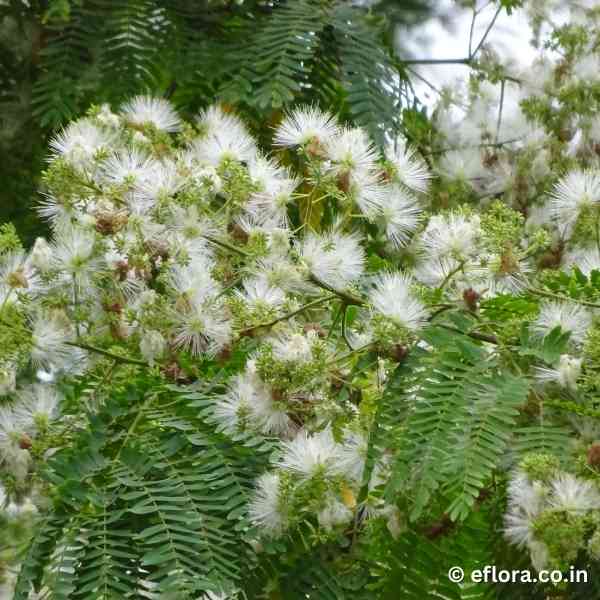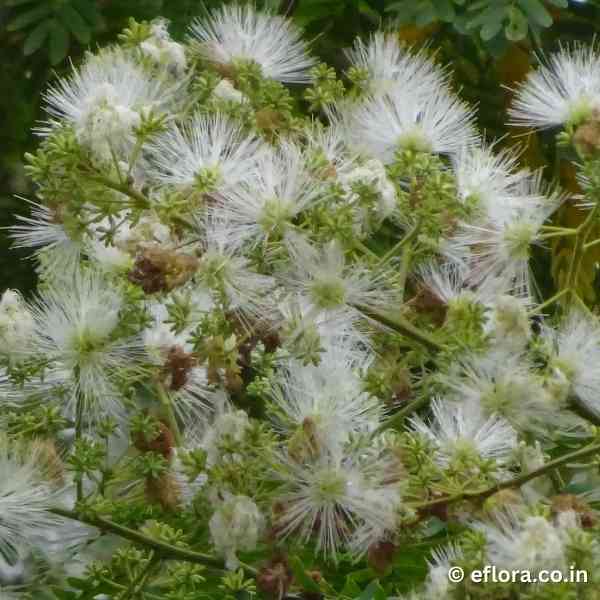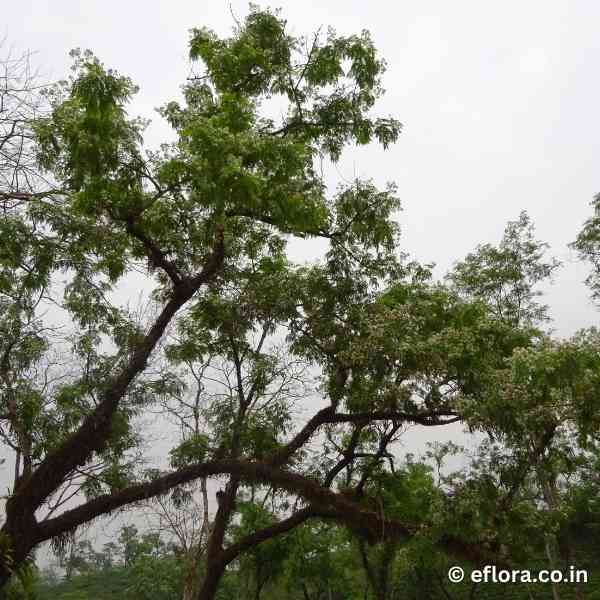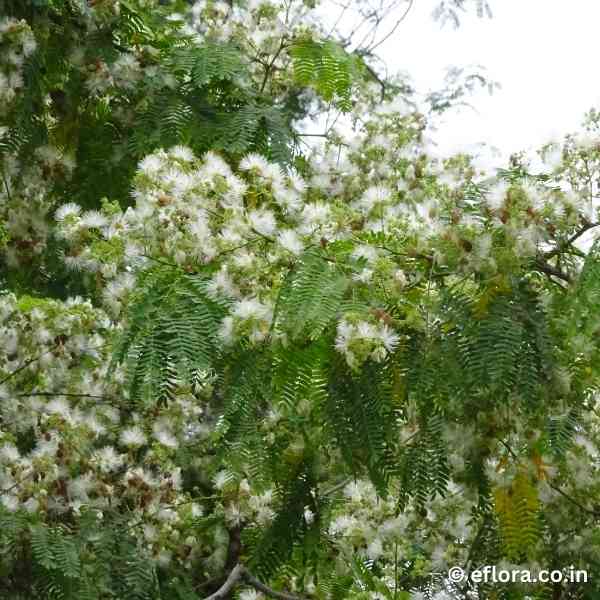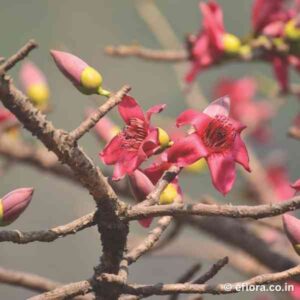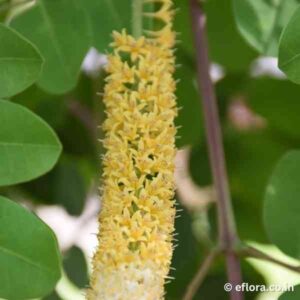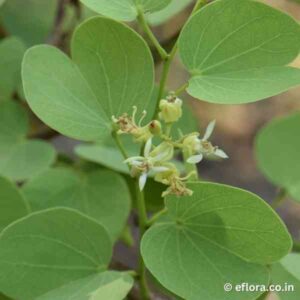Albizia odoratissima (Black Siris)
A large deciduous tree with spreading crown. Bark grey or brownish-grey to nearly black, rough outside, inside red with white streaks, soft, about 1.9 cm thick in old stems; young shoots and inflorescence densely pubescent. Leaf-rachis 10-20 cm long, with a large gland at the base and 1-2 cm between the upper pinnae, finely grey downy; stipules small, deciduous. Pinnae 7.5-16.5 cm long, puberulous or glabrescent. Leaflets 1.5-3.2 by 0.5-1 cm, oblique, oblong-obtuse or sub-acute, often mucronate, sub-coriaceous, adpressed pubescent on both surfaces or glabrescent above, glaucous beneath; midrib parallel to and closer to the upper edge; base rounded or truncate, and 3-4 nerved on the outer and broader edge; petiolule very short. Heads few-flowered, solitary or in fascicles of 2-5, on leafy corymbose panicles at branch ends; peduncles 1.3-3.8 cm long; bracts 0.25-0.5 cm long, ovate, acute or acuminate, brown tomentose. Flowers sessile, fragrant. Calyx very small, campanulate, densely pubescent outside; teeth obsolete or minute. Corolla 0.4-0.8 cm long, funnel-shaped, hairy; lobes lanceolate, about 0.25 cm long. Stamens pale-yellow, about 2 cm long; staminal tube about half the corolla-tube. Pod 12.5-30.5 by 1.8-3 cm, shortly stipitate, thin, flexible, tomentose when young, reddish-brown or dusky greenish-brown, broadly but rather indistinctly reticulate. Seeds 8-12 (after Kanjilal et al. 1938).
Etymology: The genus name Albizia named after Filippo degli Albizzi, an Italian nobleman who introduced Albizia julibrissin (Persian silk tree) to Europe in the mid-18th century. The specific epithet odoratissima derived from the Latin word odoratus, meaning “fragrant” or “having an aroma,” and the superlative suffix -issima, indicating “very” or “most.” Thus, odoratissima translates to “most fragrant,” referring to the tree’s strong aromatic qualities, especially in its wood or flowers.

